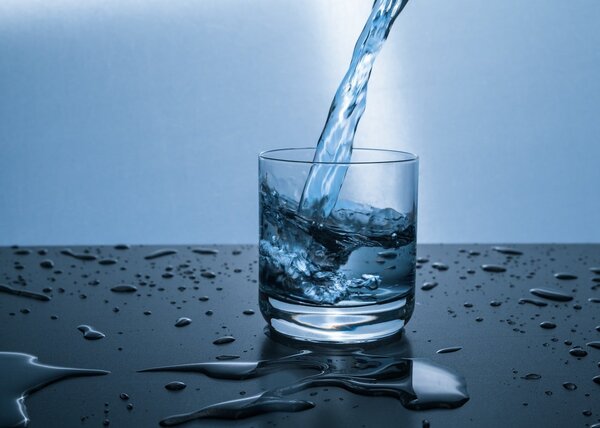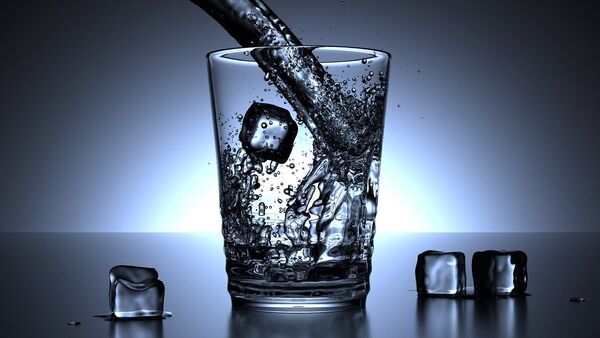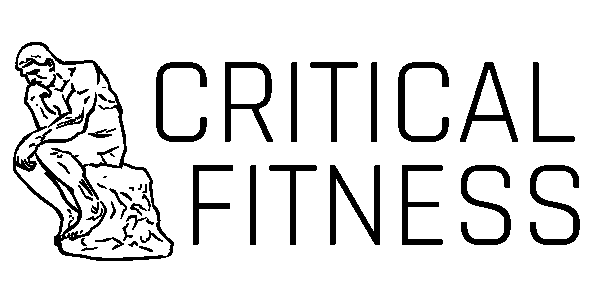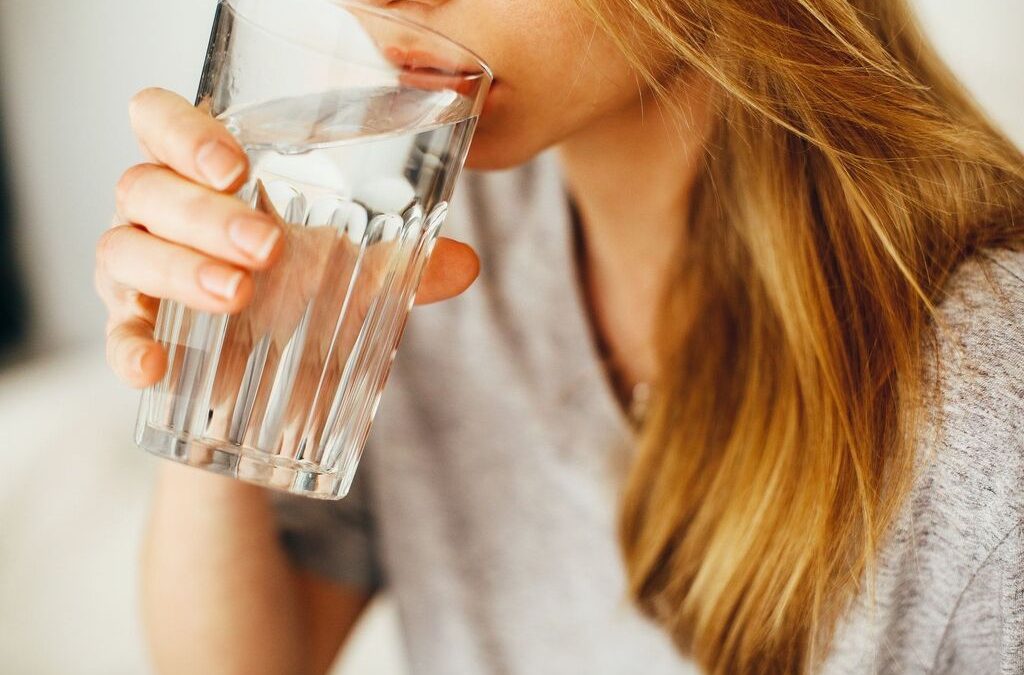“Drink more water” is the single most common piece of nutrition advice I hear trainers tell their clients. And it has to be water. Soft drinks, flavoured drinks, milk, and caffeinated drinks don’t count. And at least 8 glasses a day.
I know it’s important, but you’d think an extra glass or two of water a day could change your life! I see claims about flushing out toxins, improving digestion, curing heart disease, and contributing to world peace. Incredible!
But a lot of this advice is not accurate. The trainer giving the advice may not really understand how our body uses water.
Like all good misconceptions, there’s a drop of science in this ocean of myth. Like always, someone takes it way too far, and decides that if some water is good for us, that more is better. So we’ll start by examining the origin of the myth, before identifying what trainers should be telling their clients.

This is quite a headline, and an example of some of the nonsense out there about water consumption. There’s nothing like an extravagant claim to get everyone’s attention!
Where did this idea about 8 glasses a day come from?
The origins of this advice are not clear. But we do know it goes back at least 75 years. A paper by Vreeman and Carroll (2007) identified a 1945 recommendation that:
“A suitable allowance of water for adults is 2.5 litres daily in most instances. An ordinary standard for diverse persons is 1 ml for each calorie of food. Most of this quantity is contained in prepared foods.”
But while people often take notice of the first sentence, the last is often ignored. Food counts towards our water intake more than you would think.
An influential early nutritionist, Dr Frederick Stare, shared similar advice in a book from 1974:
“How much water each day? This is usually well regulated by various physiological mechanisms, but for the average adult, somewhere around 6 to 8 glasses per 24 hours and this can be in the form of coffee, tea, milk, soft drinks, beer, etc. Fruits and vegetables are also good sources of water.” 1
Again, it’s important to note this includes all sources of water. This means all fluids. And food sources (generally, the lower the fat content of the food, the higher the water content). But, it was not a statement based on any scientific research – it was the opinion of a leading nutrition researcher of the day.

So my trainer or health guru is wrong about water?
Probably. Can you believe it?
But no-one is disputing that water is essential to life, and we need plenty of it. But usually the guru you are relying on just doesn’t have a very deep knowledge of the topic. 2
Water makes up a large portion of our body weight – about 60% for an adult, depending on their body composition. Its functions include maintaining body temperature and blood volume, transporting nutrients and waste products, acting as a solvent for vitamins and minerals, lubricating our eyes and joints, and taking part in metabolic reactions.
But our body does a pretty good job of maintaining an appropriate water balance – just another example of homeostasis, which has come up a few times here at Critical Fitness. This is what Stare meant when he said this is “well regulated by physiological mechanisms”.
Water is turned over constantly in the body. We consume, and excrete, about 2.5 litres (that’s 10 cups for anyone confused by the metric system) throughout the day in a number of ways. It’s consumed in fluids, as well as food. And we produce about 200 ml per day as a result of metabolic reactions in our body.

For this table, and most of the description of the physiology of water balance that follows here, I’m referring to an excellent review by Jequier & Constant (2010).
We lose water through urine and faeces, in our breath, and from our skin (even when we are not noticeably sweating). So we need to replace this lost water.
How can we get our water intake right? This sounds complicated

For most of us, it’s not complicated. We’re about to show you one simple trick to keep track of your water intake!
How do we know what the perfect amount is? If we had to think about this, taking into account our physical activity, our size, the temperature, and humidity, we’d never get anything else done. Luckily, our body has a reflex that kicks in to let us know when we need more water. It’s called thirst!
Our body detects changes in the density of our extra-cellular fluid when body water changes by less than 1%. That’s pretty sensitive. This triggers the release of anti-diuretic hormone, which causes the thirst discussed above. Then our kidneys retain more water than usual, and urine production drops.
For most of us, thirst is a pretty good guide to our fluid needs. But there are a couple of exceptions to this. The elderly and young children have a less sensitive thirst reflex than adults, so we may need to be more attentive to their needs. And if your fluid needs change based on medical advice, then take this advice. Don’t listen to me.
Thirst is also a lagging indicator, meaning it may not keep up with our immediate needs. This is really important when fluid turnover is very high (like in extreme heat, or when playing sport). In these cases we may need to be drinking ahead of our thirst.

One example of when you should not wait till your thirsty before you drink. When exercising at high intensities, in warm conditions, your fluid needs change.
What happens if we drink more than we need to, just to be sure?
First of all not much, other than we’d lose more. Every molecule that enters the body is accounted for. So if we drink more, we get rid of more.
And while not enough water is very bad for us, we cannot say that the more the better. In fact, water can be toxic! Symptoms of water toxicity include headache, vomiting, confusion, and seizures.
There is even an awareness campaign that tries to help us understand the dangers of this highly dangerous liquid. Though it sounds scarier if you call it “dihydrogen monoxide”.

Water is so dangerous it can even corrode metal. Why would you put that in your body? Source: https://www.facebook.com/h2oawareness/
Be serious for a minute. What is water toxicity?
This is a little silly, but water toxicity is a real thing, and more common than you may think. The technical term is hyponatremia, and has caused some high profile deaths, including one as a result of a radio station giveaway.
It’s more common in endurance events like triathlons, when people use the wrong hydration strategies. For example, recreational runners may attempt to mimic the strategies used by high level competitors, who run at a much faster pace. But as the recreational runner is slower, they may be expending less energy, and generating less heat, so they don’t need to drink as much.
Should we be sticking to water only, or is that a myth too?
It’s probably not a bad idea, but it’s not the end of the world if you don’t. Keep in mind the sugar in sweetened drinks contributes to obesity – so encouraging drinking water instead is an important public health measure.
The caffeine in tea and coffee you may need to be aware of too, as this slightly increases urine production. It’s not a large effect though, if you have moderate doses, and have caffeine regularly. So yes, your cup of tea can still count towards your fluid needs.

No, this probably won’t dehydrate you. And it’s delicious, so don’t worry about your caffeine intake.
How much water do the experts think we should drink?
Current Australian advice works out at between 8-10 glasses a day, but there are flaws with this number.
First of all, this is called an “adequate intake” (AI) rather than a “recommended dietary intake” (RDI). This means the evidence supporting the advice is weaker than we would like. In this case, it’s based on what the average Australian currently reports that they consume.
So people self-report fluid intake (usually incorrectly), and this is what we recommend that people drink. You can see why it’s unwise not to get too worked up about not meeting this recommendation every day!
Also consider that Australia is really hot, and other countries have slightly different advice. For example, the National Health Service in the UK recommends about 6-8 glasses a day. So putting a hard number on it is usually unnecessary, and thinking “the more the better” can be dangerous.
Conclusions
Drink what you want to, when you feel thirsty. Make it an unsweetened drink if you can. If you don’t drink often, and make an effort to have more, that’s great, and probably not a bad idea.
If you are exercising or working in hot conditions, don’t wait to feel thirsty before you increase your fluid intake. And there are other complications of chronic mild dehydration, like kidney stones, that are best avoided. So we’re not saying it doesn’t matter how much you drink, we’re saying stop making it more complicated than it needs to be!

Footnotes
1 I wasn’t able to find this quote in its original context, so I’m relying on numerous other sources that also quote it.
2 Not only is it a complex issue, but there is a lot we don’t know, due to some of the limitations of nutrition research. For a great plain English summary of these issues, Professor Aaron Carroll (who we cited above) wrote about it for the New York Times.



Recent Comments